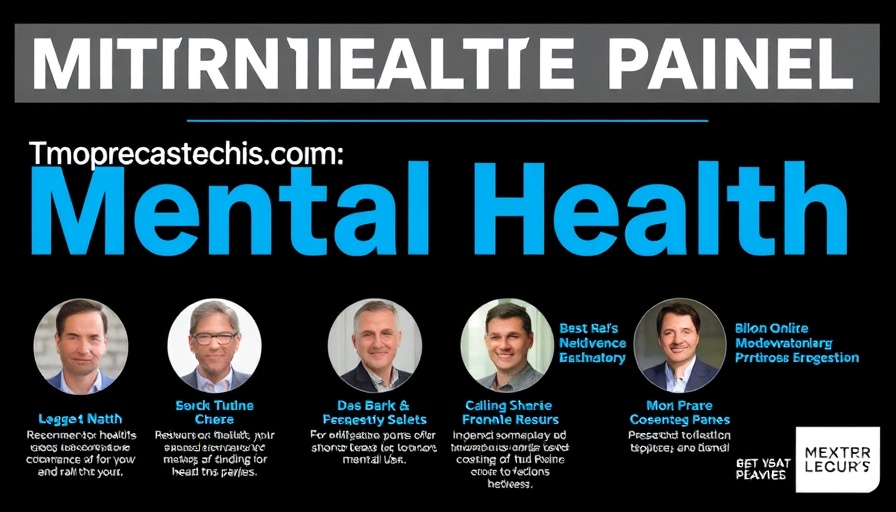
Understanding the Landscape of Mental Health in Our Community
As mental health emerges as a critical community issue, communication, innovation, and collaboration become essential. With sensitivity toward emotional well-being and societal interconnections, the recent FFTC Connects event titled The Future of Mental Health In Our Community laid down a framework for addressing these crucial challenges faced by many. The discussion brought together a host of key players in mental health from various organizations, encapsulating a collective vision for creating meaningful change.
In FFTC Connects: The Future of Mental Health In Our Community, key leaders discussed vital insights on advancing mental wellness, prompting us to explore additional perspectives and strategies for improvement.
Building Bridges Through Innovation
The keynote speakers emphasized the urgency of breaking down barriers between traditional mental health services and the community. With an ongoing commitment to enhancing accessibility, community engagement, and peer-led support systems, each organization represented presents innovative solutions tailored to meet the diverse needs of our population. For instance, the Steve Smith Foundation has established a behavioral health urgent care clinic, allowing individuals immediate access to mental health support—something so vital during crises that don’t occur between office hours.
Universal Access: A Community’s Fight
One of the most striking themes from the event was the necessity for universal access to mental health services—regardless of insurance status.
Ann Oshel from Alliance Health articulated how their organization is evolving to ensure that vulnerable populations, including the uninsured and those experiencing homelessness, are not overlooked. With innovative responses to social determinants of health, they are dedicated to integrating services that address not just the mind, but the body and social well-being too.
The Collective Effort: Collaboration is Key
The commitment to collaboration transcends every discussion. Each speaker acknowledged that no single organization can solve the myriad challenges plaguing mental health care alone. The collective goal is to weave together diverse resources, outreach initiatives, and educational programs to create a holistic system of care.
For instance, NAMI Charlotte’s grassroots approach works through community partnerships not only to provide support but also to elevate the conversation around mental health in spaces that are often overlooked. This strategy advocates for community education on mental health, offering the public a chance to engage with and understand these issues better.
Looking Forward: A Vision for Growth
With conversations flowing freely about achieving better mental health outcomes, community members and stakeholders alike are encouraged to consider their role in supporting these organizations. The panelists articulated a clear call to action: funding is vital. By mobilizing resources and growing partnerships, we can build a supportive environment that champions mental wellness—a key driver for economic mobility.
As we navigate the complexities of mental health, it is crucial to advocate for change both individually and within our institutions. Whether through connecting with an organization, spreading awareness, or funding initiatives, each action constitutes a pivotal step in fortifying our community’s mental health framework.
The powerful conversation ignited during the FFTC Connects event offers a compelling reminder: mental health matters not merely as a personal concern, but as a community issue. Let's continue to champion mental health together.
 Add Row
Add Row  Add
Add 


Write A Comment